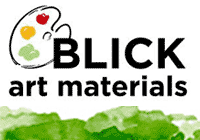

finial
(fin-ee-uh l)
The part of a letter known as a finial is usually a somewhat tapered curved end on letters such as the bottom of C or
e or the top of a double-storey a.
Another definition for finial is a swash or ornamental flourish, much like an extended serif, ascender, or descender,
often added as a variation to some characters in a typeface.
Source: drawsketch.about.com
diptych
(dip-tik)
A picture or bas-relief made of two panels hinged together, often an altarpiece. Also, any picture consisting of two
individual surfaces. Also, an ancient Roman or Early Christian two-hinged writing tablet, or two ivory memorial
panels.
A three-paneled artwork is a triptych. A four-paneled one is a quadriptych. An artwork of multiple panels — any
number greater than three is a polyptych.
Source: artlex.com
triptych
(trip-tik)
A painting or carving that has three side-by-side parts, panels, or canvases. Typically, a triptych has three hinged
panels, the two outer panels designed so that they can be folded in towards the central one.
This was a common form for an altarpiece during the Middle Ages and the Renaissance. The outer parts of such
triptychs were typically hinged to the central one so that they could be closed over it, and in this case reverse
sides were often painted. A triptych can also be, more loosely, something composed or presented in three parts or
sections.
"Triptych" has come to us from the Greek "triptychos," formed by combining "tri-" ("three") and "ptyche" ("fold" or
"layer"). Although "triptych" originally described a specific type of Roman writing tablet that had three hinged
panels, it makes sense that the word was adopted first for a three-paneled painting, and then to include anything
composed of three parts. "Triptych" can even be used as a synonym for "trilogy."
Source: artlex.com
oblique
(oh-bleek)
Similar to italic type, oblique type is usually a sans serif font that has been slanted or tilted approximately 12
degrees and then adjusted to improve the appearance.
Source: desktoppub.about.com
montage
(mon-tahzh)
Montage is a combination of images taken from any number of media (photographs, film, and handmade). These images
can be whole or partial, glued together on a surface (such as a photomontage), or edited together to produce a video
or film. Think of those film clips edited together that the annual Academy Awards (a.k.a. the Oscars) ceremony loves
to show in order to stir up our emotions - especially the images of those who passed away over that past year.
Tracey Moffatt (b. 1960 in Brisbane, Australia) has turned the Oscar editing aesthetic into an art. Her film
montages knit together snippets from television and film in order to create a sense of commentary on universal
issues: love, motherhood and, most recently, art.
Source: arthistory.about.com
parody
(par-uh-dee)
A work that imitates the characteristic style of another work, either for comic effect or ridicule. Parody is one of
the basic tropes.
Source: arthistory.about.com















